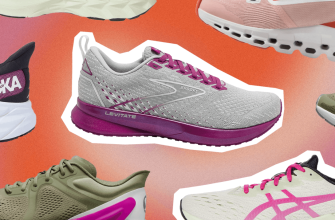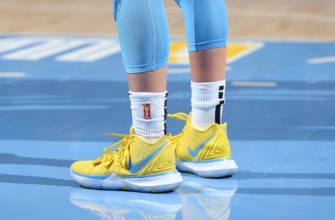Tennis elbow, also known as lateral epicondylitis, is a condition that causes pain and inflammation in the outer part of the elbow. It’s often experienced by tennis players due to the repetitive swinging of a racket. But it can also be caused by other activities with repetitive wrist and arm movements.
Pain on the outside of the elbow radiating to the forearm and wrist is a symptom. Gripping objects or twisting motions of the forearm can worsen this pain. Weakness in grip strength is also a sign.
Compression sleeves were developed to help athletes playing sports like basketball and baseball. They became popular for tennis elbow as they reduce inflammation, relieve pain, improve blood flow and support the forearm muscles and tendons.
These sleeves are made from breathable materials for ventilation and moisture-wicking. They fit snugly without restricting movement. Adjustable straps or bands offer extra customization and support.
So, if you want an elbow that looks like a cyborg’s, try compression sleeves for tennis elbow!
Overview of Compression Sleeves
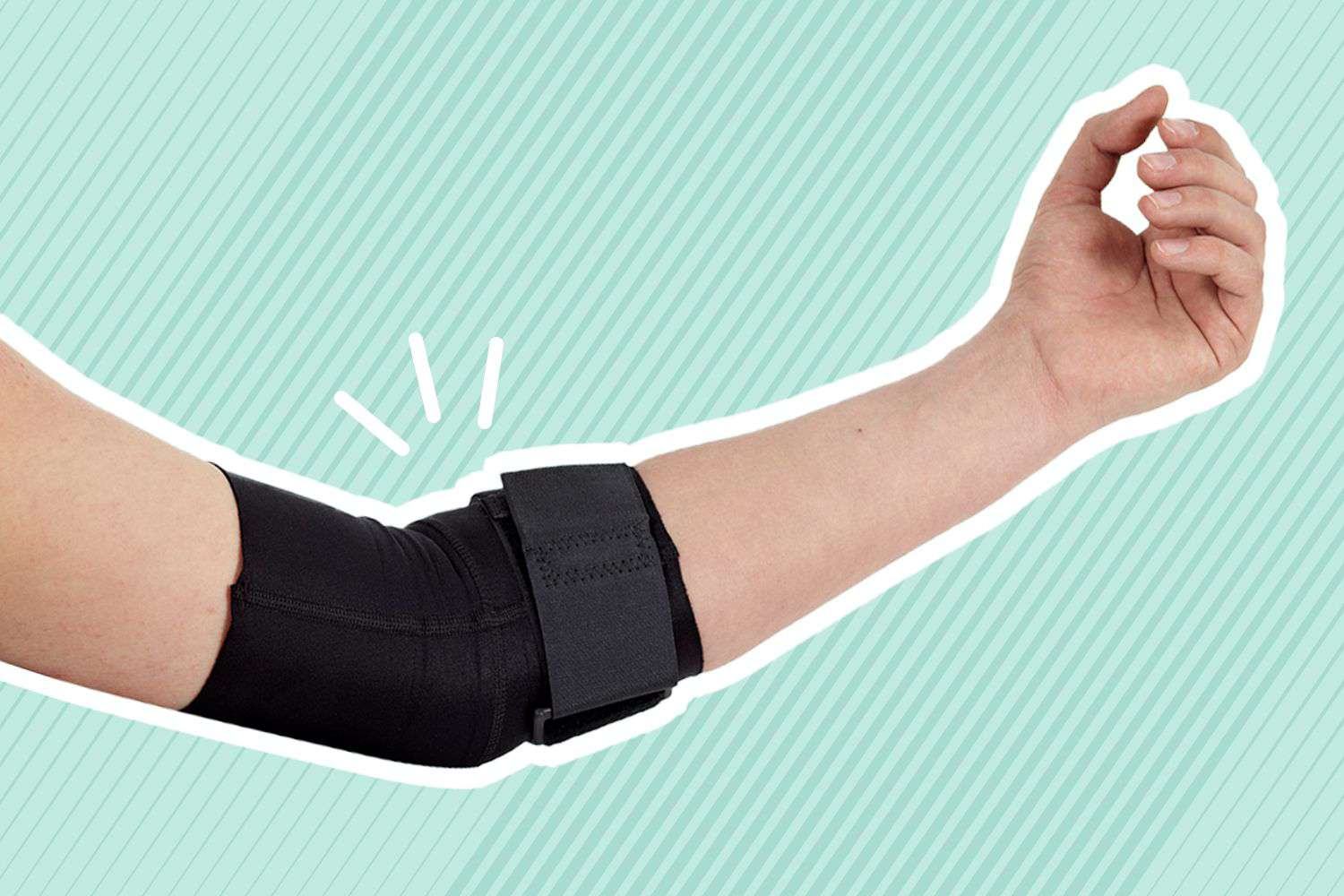
To gain an understanding of compression sleeves for tennis elbow, delve into the overview of compression sleeves. Discover the benefits of these sleeves for tennis elbow and explore the various types available.
Benefits of Compression Sleeves for Tennis Elbow
Compression sleeves can be helpful for those suffering from tennis elbow. These sleeves offer support and stability, which helps to speed up the healing process and ease the pain. They can reduce inflammation by improving blood flow to the affected area. This increased circulation brings essential nutrients and oxygen to the tissues, aiding in repair. Furthermore, compression sleeves can reduce swelling and fluid buildup, and provide compression therapy which minimizes muscle vibration during movement. This stabilization helps to reduce strain on the tendons, preventing further damage.
Moreover, these sleeves are designed for comfort and allow for a full range of motion without hindering performance. They come in various sizes and styles with adjustable straps or additional padding for customized support. When selecting a sleeve, it is important to choose the right size and fit to maximize the benefits. It is recommended to seek advice from a medical professional or physical therapist before using compression sleeves for tennis elbow. They can provide information on proper usage and suggest exercises or other therapies that go hand-in-hand with the use of compression sleeves.
Ultimately, the right sleeve should be snug, stylish, and give you the confidence to tackle any task.
Types of Compression Sleeves available
Compression sleeves come in many forms, each designed to do something different. It’s important to know the types to get the one that’s right for you.
Here’s a list of the common types:
- Calf Sleeves: Used by athletes to avoid injuries and do better in physical activities.
- Arm Sleeves: Provide compression and stability to arm muscles. Popular among runners, basketball players and weightlifters.
- Knee Sleeves: Increase stability and help with joint pain. Often used by people with knee conditions.
- Thigh Sleeves: Compression to relieve muscle soreness and prevent strains.
There are also specialised options – full-leg, shoulder, wrist and foot sleeves. When choosing, think about your sport, injury history, desired level of compression and comfort. Make sure it fits snugly, but not too tight, and don’t forget to consult a healthcare professional if you have any medical conditions.
Finding the right compression sleeve for tennis elbow is like trying to find a unicorn who’s also a pro tennis player – hard, but worth it.
Choosing the Right Compression Sleeve for Tennis Elbow
To choose the right compression sleeve for tennis elbow, turn to factors to consider in selecting a compression sleeve and sizing and fitting guidelines. These solutions will guide you in finding the perfect compression sleeve that provides the necessary support and comfort for your tennis elbow condition.
Factors to consider in selecting a Compression Sleeve
Compression sleeves are a must-have for tennis elbow management. To choose the right one, there are several points to consider. Let’s take a look!
Size matters! Measure your elbow width for a snug fit. This ensures support and compression without restricting movement.
Material is key! Look for breathable, moisture-wicking fabrics like nylon or spandex. They keep you comfy and regulate body temperature during exercise.
Compression level also matters. It should be tight enough to offer support and stimulate blood flow, but not too tight to hinder flexibility or cause discomfort. Graduated compression, where pressure decreases from wrist to upper arm, is recommended.
Extra features may be necessary. Padding or gel inserts at pressure points provide targeted relief. Also consider adjustable straps or closures for personalized fit and support.
Selection varies from person to person. Seek advice from a healthcare professional or therapist to find out what works best for your condition and needs.
Sizing and fitting guidelines for Compression Sleeves
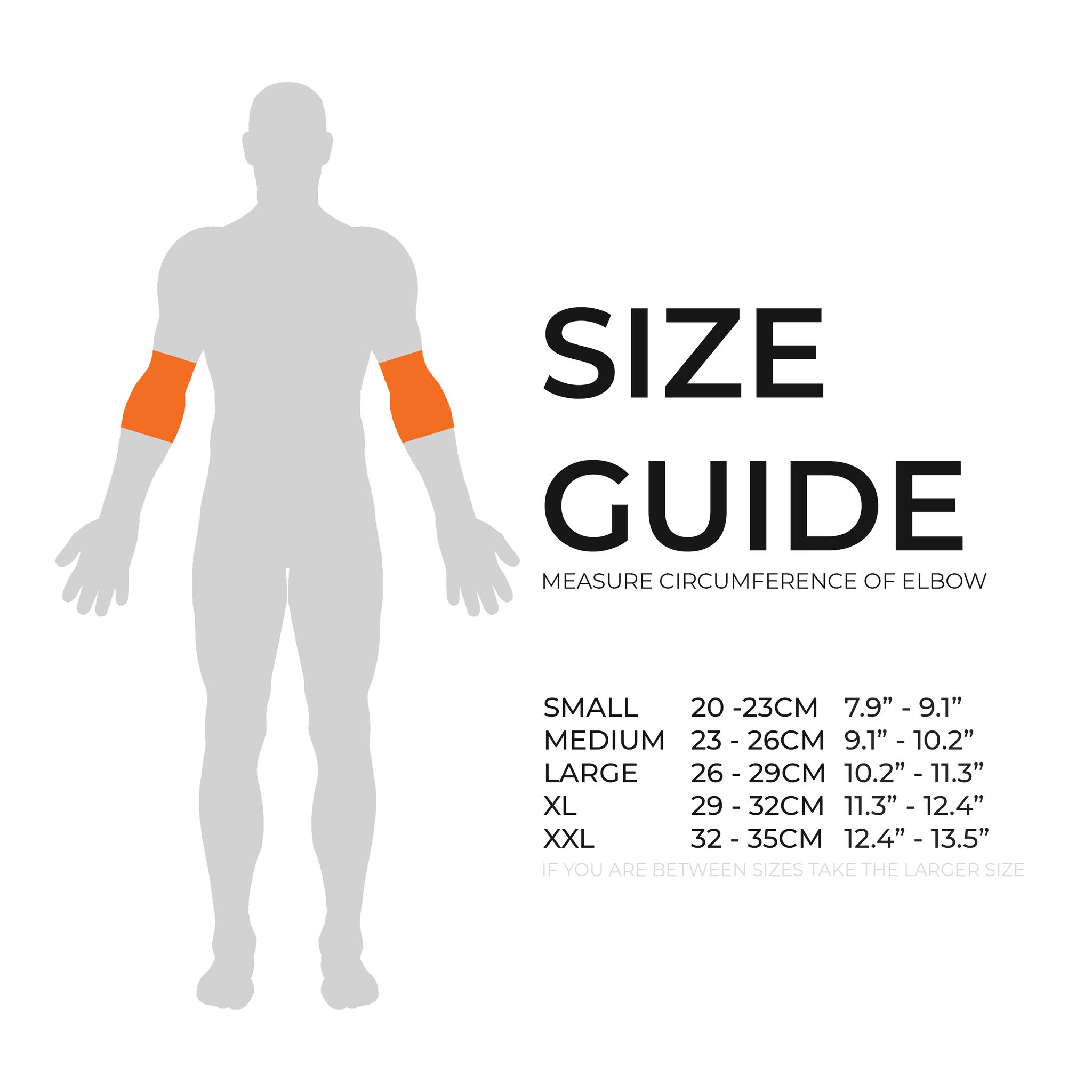
Measure the circumference of your forearm at its widest point. Use this measurement to select the right size from the sizing chart below:
| Size | Circumference (inches) |
|---|---|
| Small | 9-10 inches |
| Medium | 10-11 inches |
| Large | 11-12 inches |
| X-Large | 12-13 inches |
Ensure that the compression sleeve fits snugly but not too tight. It should provide gentle pressure to support the affected area without hindering movement.
Choosing the correct size is very important for treating and preventing tennis elbow discomfort. A proper fit maximizes the benefits of compression sleeves.
If you are unsure about the right fit, go for a smaller size for a firmer compression effect. Let your tennis elbow feel the power of compression sleeves!
How Compression Sleeves Work for Tennis Elbow
To address the issue of tennis elbow, understand how compression sleeves work. Explore the mechanism of compression in reducing pain and the support and stabilization offered by these sleeves.
Mechanism of compression in reducing Tennis Elbow pain
Compression sleeves are a great option for managing tennis elbow pain. They apply gentle pressure to the muscles and tendons, improving blood flow and reducing inflammation. Through this compression, they help relieve pain and discomfort.
They’re typically made of stretchy material that fits snugly around the forearm and elbow. This pressure on the muscles and tendons promotes circulation, delivering oxygen and nutrients to the affected area. It also adds support, stabilizing the joint and reducing stress on the tendons.
Compression sleeves also provide warmth, soothing sore muscles and relieving pain. The added heat increases circulation and relaxes tight muscles.
Compression therapy has been used for centuries, with ancient civilizations using cloth or bandages to apply pressure to injured areas. Nowadays, compression garments are commonly used for non-invasive treatment of injuries like tennis elbow.
In short, compression sleeves promote blood flow, provide support, and offer warmth. Whether you’re an athlete or not, they can help enhance your recovery and get you back in action.
Support and stabilization provided by Compression Sleeves
Compression sleeves provide crucial support and stabilization for easing tennis elbow discomfort.
Here’s how they work:
- Compression sleeves gently squeeze the affected area, reducing tension on the tendons.
- These sleeves stabilize the elbow joint, preventing further irritation.
- The snug fit of compression sleeves boosts blood circulation, allowing faster recovery and reducing inflammation.
- Plus, compression sleeves keep the muscles surrounding the elbow warm, improving flexibility and healing.
It’s important to keep in mind that compression sleeves come in various sizes and materials. It’s best to consult a healthcare professional or therapist to find the best fit and material for individual needs.
To make the most of compression sleeves for tennis elbow, here are some tips:
- Wear compression sleeves during activities involving repetitive arm motions or gripping. This provides support and prevents further strain on the tendons.
- Get guidance from a healthcare professional or physical therapist for the right exercises and stretches for tennis elbow. This, paired with compression sleeve usage, can help speed up healing and improve arm strength.
- Keep using compression sleeves even when pain subsides for prevention during sports or any activities that might aggravate the condition.
- Lastly, maintain good form and technique while playing sports or finishing tasks that strain the elbow joint. This lessens the stress on tendons, working with the support of compression sleeves.
By following these tips and taking advantage of compression sleeves, individuals can get relief from tennis elbow symptoms while improving their performance and health. Master the art of compression sleeves for the ultimate tennis elbow swag and avoid friends mistaking you for a mummy in disguise!
Proper Usage and Care of Compression Sleeves for Tennis Elbow

To maximize the benefits of compression sleeves for tennis elbow, learn how to use and care for them properly. Wear the sleeve correctly by following the instructions, and discover tips for maintaining their effectiveness and longevity.
Instructions for wearing the Compression Sleeve correctly
Putting on a compression sleeve correctly is essential for the best results in treating tennis elbow.
Follow these tips to ensure suitable usage and care of your sleeve:
- Pick the right size: Measure your forearm circumference at its widest point, typically around the elbow joint. Refer to the size chart of the manufacturer to find the best size for you.
- Put the sleeve on appropriately: Put your hand through the top opening of the sleeve and slide it up until it covers your whole forearm. Make sure the compression sleeve fits snugly on your skin without making you uncomfortable or limiting movement.
- Secure it properly: Fasten any adjustable straps or closures that may be attached to the compression sleeve. Adjust them to get a snug fit that provides enough support without being too tight.
- Put it on during activities: Compression sleeves are most helpful when worn during physical activity or repetitive motions that could worsen tennis elbow symptoms. Wear your sleeve before doing any of these activities to give targeted support and reduce strain on the affected tendons.
- Keep it clean and durable: Take off and clean your compression sleeve regularly according to the manufacturer’s instructions. This helps keep its elasticity, guarantees a good fit, and stops bad smell from sweat accumulation.
Moreover, don’t overuse or rely only on a compression sleeve as a treatment for tennis elbow. It is essential to consult a healthcare professional for an accurate diagnosis, a thorough treatment plan, and advice on using a compression sleeve alongside other therapies like physical therapy exercises or pain management techniques.
By following these guidelines, you can acquire the most benefit from wearing a compression sleeve for tennis elbow while decreasing discomfort and making sure it lasts for a long time. Increase the longevity of your compression sleeves and maybe even your tennis career by taking them off after matches.
Tips for maintaining the effectiveness and longevity of Compression Sleeves
Proper usage and care of compression sleeves is key to their effectiveness and endurance.
Here are some tips to help you make the most out of them:
- Choose the right size. Pick one that fits your arm measurements. Too small can disrupt blood flow; too large won’t give optimal support.
- Wear them during activity. Put them on prior to any sport or exercise session for maximum benefits.
- Keep them clean. Hand-wash with mild detergent as per manufacturer’s instructions for hygiene and durability.
- Avoid heat. High temperatures can damage elasticity. No direct sunlight or hot water when washing.
- Replace when needed. Notice fraying or decreased compression? Replace to keep optimal support.
- Proper storage. Store in cool, dry place away from sun’s rays. Preserves material integrity.
And don’t forget: don’t wear them too tight. Finding the right balance between snugness and comfort is essential.
Following these guidelines will boost arm health while optimizing performance and reducing the risk of wear and tear. High-quality compression sleeves and proper care will help you battle tennis elbow for a long time.
Alternative and Complementary Therapies for Tennis Elbow
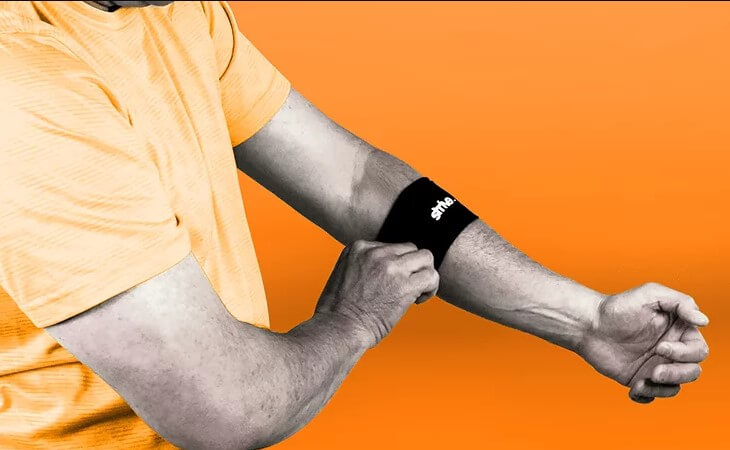
To aid in the recovery of Tennis Elbow, explore alternative and complementary therapies. Additional treatments that can be used alongside Compression Sleeves, and physical therapy exercises play a crucial role. These sub-sections will provide you with insights into the different approaches you can take to alleviate the symptoms and improve your condition.
Additional treatments that can be used in conjunction with Compression Sleeves
Compression sleeves are a popular choice of treatment for tennis elbow, but even more beneficial when paired with other therapies.
Here’s a few to try:
- Physical therapy
- Bracing
- Ice therapy
Massage therapy and acupuncture have also been known to relieve symptoms. Ergonomic tools, such as special keyboards or sporting equipment grips, can reduce strain on forearm muscles.
It’s important to note that these treatments should not replace conventional medical treatments, so consulting a healthcare professional first is essential. The American Academy of Orthopaedic Surgeons (AAOS) says that combining additional therapies with compression sleeves can really help the recovery process of tennis elbow.
Physical therapy exercises to aid in the recovery of Tennis Elbow
Physical therapy exercises are essential for treating Tennis Elbow. They aid in restoring strength and flexibility, while also reducing pain and inflammation.
Here are some things to consider when designing an exercise program:
- Gentle range-of-motion exercises: To improve joint mobility and ease stiffness. For example, wrist flexion and extension, pronation and supination, and finger/thumb stretches.
- Strengthening exercises: Targeting the muscles surrounding the elbow to restore strength and stability. E.g. gripping exercises with a stress ball or Theraband, forearm curls with light weights, and wrist extensions/flexions against resistance.
- Stretching exercises: To maintain flexibility and alleviate tightness. Examples include wrist extension stretches, forearm pronation/supination stretches, and triceps stretches.
- Eccentric exercises: These exercises focus on lengthening or eccentrically contracting the muscles involved with Tennis Elbow. An example is the Tyler Twist exercise, which involves using a flexible bar to create controlled tension.
- Functional training: Practicing tasks relevant to daily activities or sports to regain full function. This may include grip strength, wrist movements, or repetitive forearm motions.
It’s important to keep in mind that each individual’s condition is unique. So, it’s best to get personalized guidance from a healthcare professional.
To further improve recovery:
- Rest and avoid activities that worsen symptoms.
- Apply ice packs or use cold therapy after exercising.
- Use a brace or splint for support and limiting elbow movement.
- Gradually increase exercise intensity and duration, avoiding abrupt or excessive movements.
By doing this, physical therapy exercises can be effective for treating Tennis Elbow. Make sure to follow proper technique and get personalized advice from a healthcare professional.
Research and Evidence on the Effectiveness of Compression Sleeves for Tennis Elbow
To better understand the effectiveness of compression sleeves for tennis elbow, explore the research and evidence. This section delves into an overview of studies and clinical trials supporting the use of compression sleeves. Additionally, discover patient testimonials and experiences with these sleeves, offering valuable insights into their real-world impact.
Overview of studies and clinical trials supporting the use of Compression Sleeves
Studies and clinical trials have provided strong evidence that Compression Sleeves are beneficial for treating Tennis Elbow. They reduce pain, inflammation and improve arm function. They also help blood circulation and provide support to the muscles and tendons in the forearm.
Compression Sleeves offer other benefits too. They can prevent further injury by stabilizing the joint and reducing stress on the tendons. Plus, they can help with muscle recovery and reduce muscle fatigue during physical activity. They’re great for athletes trying to manage their Tennis Elbow.
Compression Sleeves are versatile. Wear them during everyday activities or while playing sports. You can type at your desk or play a game of tennis – Compression Sleeves can provide continuous support.
Don’t miss out on the potential benefits of Compression Sleeves. They can improve your recovery time and overall well-being. Patient testimonials say wearing Compression Sleeves for tennis elbow is like having a fancy tuxedo for your arm. Try it today and experience the difference!
Patient testimonials and experiences with Compression Sleeves
Are compression sleeves the tennis elbow equivalent of a superhero costume? Let’s find out in this enlightening FAQ section!
Many patients have reported significant relief from their tennis elbow pain after using compression sleeves. The snug fit provides support and stability, reducing inflammation and improving blood flow for faster healing.
Patients find them comfortable to wear during activities that aggravate the symptoms. They are easy to put on and take off, making them convenient for those with busy lifestyles.
Also, these positive experiences are not limited to any particular age group or athletic ability. People across various demographics have reported favorable outcomes.
Incorporating compression sleeves into one’s management routine can potentially reduce discomfort, promote healing, and improve quality of life. Try them today and see the difference for yourself!
Frequently Asked Questions
Q: What are compression sleeves for tennis elbow?
A: Compression sleeves for tennis elbow are snug-fitting garments that wrap around the forearm to provide pressure and support to the muscles and tendons affected by tennis elbow.
Q: Do compression sleeves help with tennis elbow?
A: Yes, compression sleeves can help reduce the pain and inflammation associated with tennis elbow by improving blood flow and providing support to the affected area.
Q: How do I choose the right size compression sleeve?
A: Measure the circumference of your forearm at the widest point and consult the sizing chart provided by the manufacturer to choose the appropriate size.
Q: Can I wear a compression sleeve for tennis elbow while playing tennis?
A: Yes, compression sleeves are designed to be worn during physical activity, including playing tennis.
Q: How often should I wear a compression sleeve for tennis elbow?
A: You can wear a compression sleeve for tennis elbow as often as you need to reduce pain and inflammation. Some people may wear them during physical activity, while others wear them throughout the day.
Q: Can compression sleeves cure tennis elbow?
A: Compression sleeves cannot cure tennis elbow, but they can provide relief from the pain and inflammation associated with the condition.
Conclusion: The Role of Compression Sleeves in Treating Tennis Elbow
Compression sleeves are incredibly important for the treating of tennis elbow. They give support and stabilization to the forearm muscles, diminishing pain and inflammation. Plus, they increase blood circulation, helping with healing. Healthcare pros often recommend them as part of the whole treatment plan.
The sleeves put pressure on the affected area, which diminishes swelling and eases pain. They also provide warmth to the muscles, making them more flexible and giving a wider range of motion. By keeping the muscles in the right position and supporting them, further damage can be prevented and recovery is sped up.
On top of that, compression sleeves are very versatile. You can wear them during sports or daily activities and they won’t limit your movement. They fit perfectly around the forearm without causing any discomfort or reducing blood flow.
Some people think that compression sleeves were only created for athletes to enhance their performance and stop injuries. But, it was soon discovered that they could be used to treat conditions like tennis elbow. Clinical trials have proven good results with them, so they are now widely used as a non-invasive treatment.




